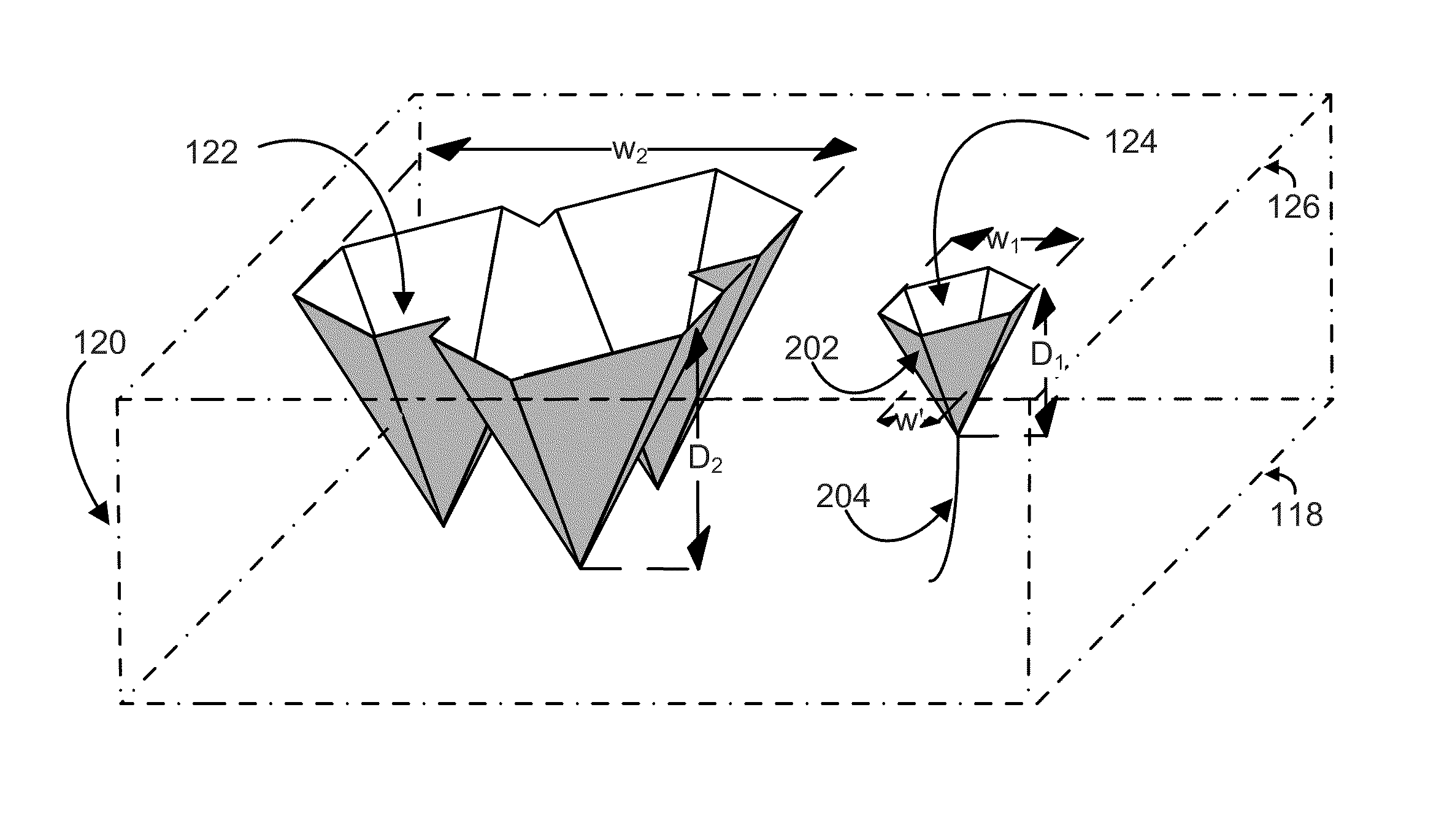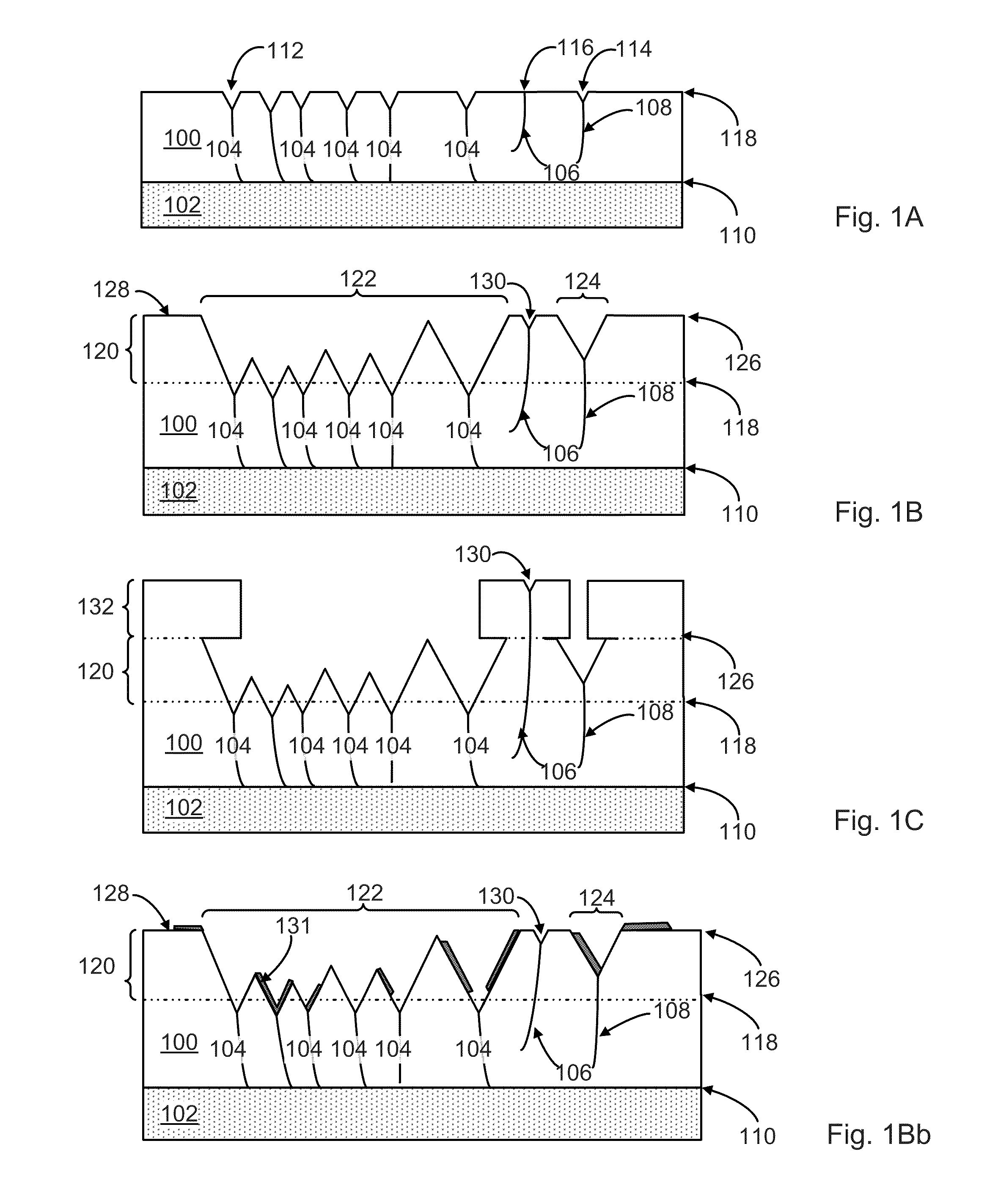Methods for improving the quality of structures comprising semiconductor materials
- Summary
- Abstract
- Description
- Claims
- Application Information
AI Technical Summary
Benefits of technology
Problems solved by technology
Method used
Image
Examples
example
[0120]FIGS. 6A-B illustrates a gallium nitride structure produced by preferred embodiments of the invention. Specifically, a (0001) sapphire substrate was utilized for growth of an original GaN layer. (Note that a number of process stages can be performed prior to growth including a substrate cleaning cycle to remove unwanted contaminants (e.g. a high temperature bake in hydrogen containing ambient), nitridization of the upper surface of the substrate, or further surface pretreatments dependent on the chemistry of both the growth material and the base substrate.) Gallium Nitride layer 100 growth commenced with deposition of a nucleation layer at a temperature of approximately 500° C. for a period of 20 mins. The temperature of the reactor was subsequently raised for thermal treatment of the nucleation layer and the growth of high quality gallium nitride. In this example the temperature in the reactor was raised to a temperature of 1100° C. in a time period of 20 mins and growth was ...
PUM
 Login to View More
Login to View More Abstract
Description
Claims
Application Information
 Login to View More
Login to View More - R&D
- Intellectual Property
- Life Sciences
- Materials
- Tech Scout
- Unparalleled Data Quality
- Higher Quality Content
- 60% Fewer Hallucinations
Browse by: Latest US Patents, China's latest patents, Technical Efficacy Thesaurus, Application Domain, Technology Topic, Popular Technical Reports.
© 2025 PatSnap. All rights reserved.Legal|Privacy policy|Modern Slavery Act Transparency Statement|Sitemap|About US| Contact US: help@patsnap.com



